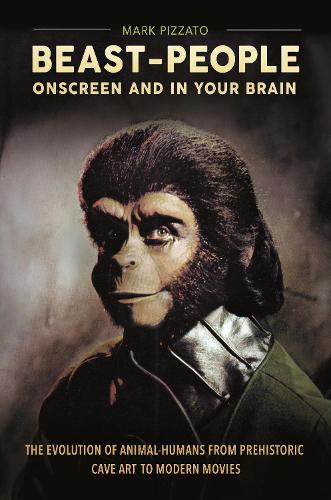
Beast-People Onscreen and in Your Brain: The Evolution of Animal-Humans from Prehistoric Cave Art to Modern Movies
(Hardback)
Publishing Details
Beast-People Onscreen and in Your Brain: The Evolution of Animal-Humans from Prehistoric Cave Art to Modern Movies
By (Author) Prof. or Dr. Mark Pizzato
Bloomsbury Publishing PLC
Praeger Publishers Inc
22nd February 2016
United States
Classifications
Tertiary Education
Non Fiction
Psychology: the self, ego, identity, personality
152.4
Physical Properties
Hardback
432
Width 156mm, Height 235mm
454g
Description
A new take on our bio-cultural evolution explores how the "inner theatre" of the brain and its "animal-human stages" are reflected in and shaped by the mirror of cinema. Vampire, werewolf, and ape-planet films are perennial favoritesperhaps because they speak to something primal in human nature. This intriguing volume examines such films in light of the latest developments in neuroscience, revealing ways in which animal-human monster movies reflect and affect what we naturally imagine in our minds. Examining specific films as well as early cave images, the book discusses how certain creatures on rock walls and movie screens express animal-to-human evolution and the structures of our brains. The book presents a new model of the human brain with its theatrical, cinematic, and animal elements. It also develops a theory of "rasa-catharsis" as the clarifying of emotions within and between spectators of the stage or screen, drawing on Eastern and Western aesthetics as well as current neuroscience. It focuses on the "inner movie theater" of memories, dreams, and reality representations, involving developmental stages, as well as the "hall of mirrors," ape-egos, and body-swapping identifications between human beings. Finally, the book shows how ironic twists onscreenespecially of contradictory emotionsmight evoke a reappraisal of feelings, helping spectators to be more attentive to their own impulses. Through this interdisciplinary study, scholars, artists, and general readers will find a fresh way to understand the potential for interactive mindfulness and yet cathartic backfire between human brainsin cinema, in theater, and in daily life.
Author Bio
Mark Pizzato, MFA, PhD, is professor of theatre and film at UNC-Charlotte, where he teaches theatre history, theory, playwriting/screenwriting, and various topics in film.
